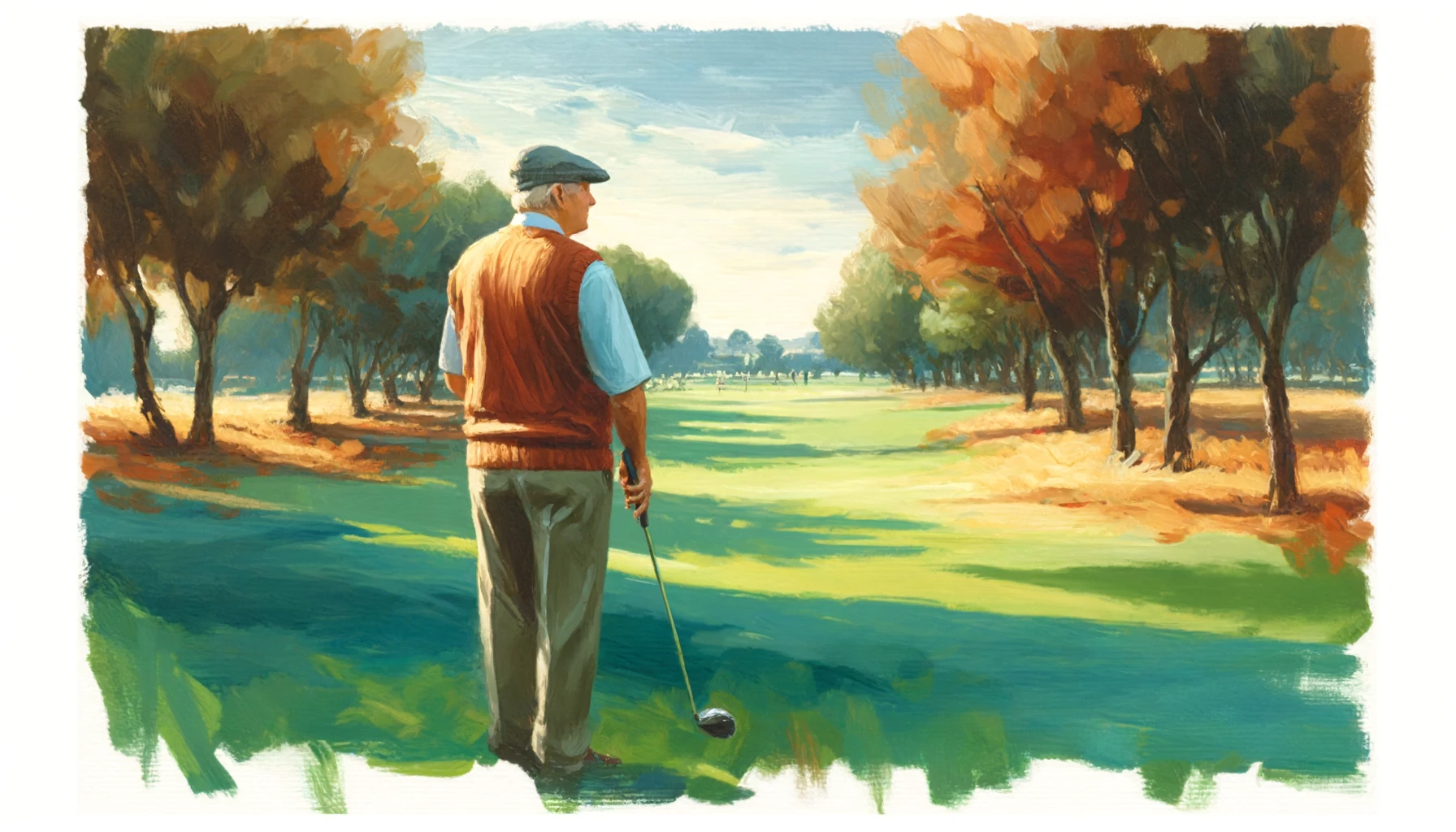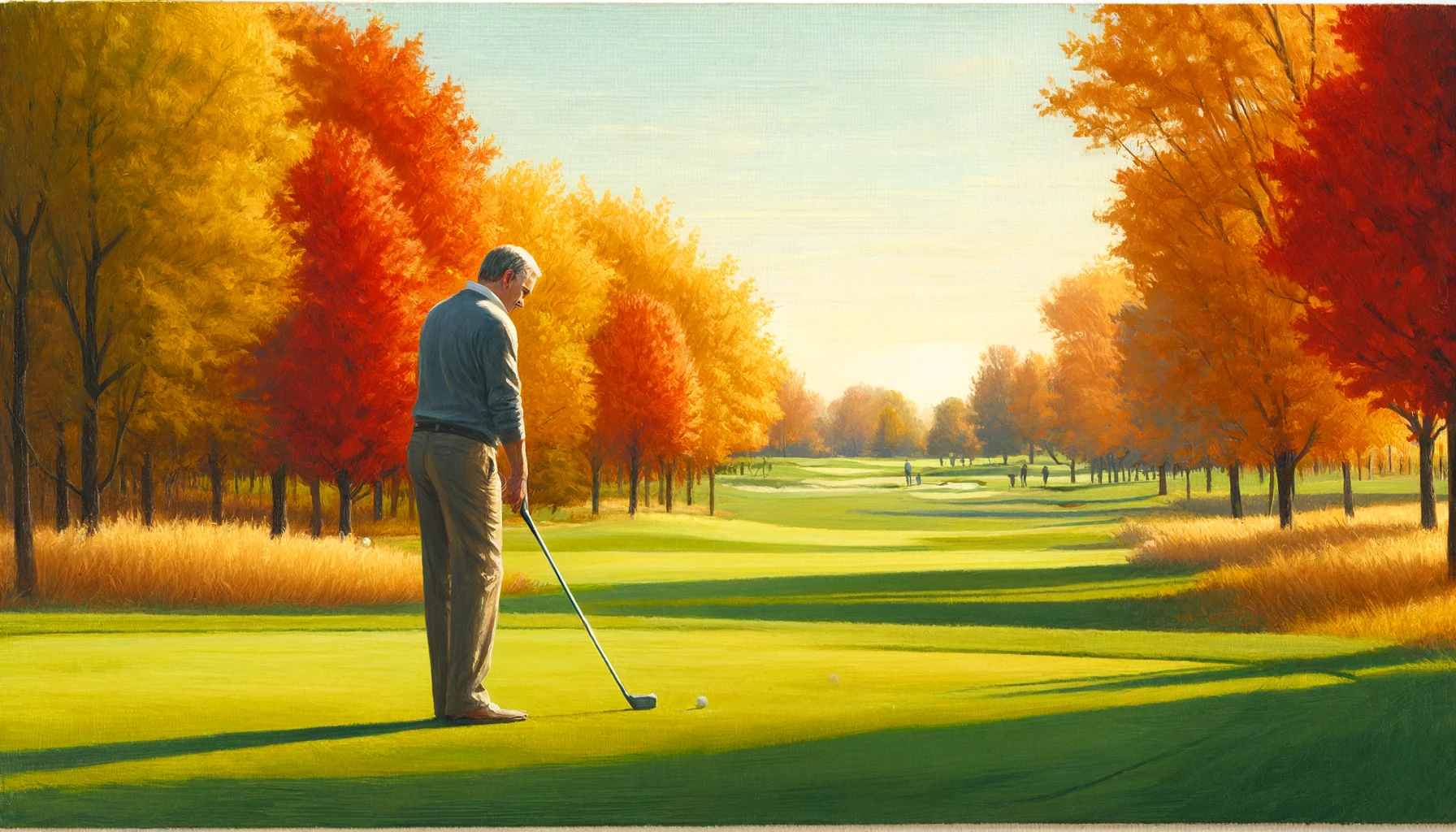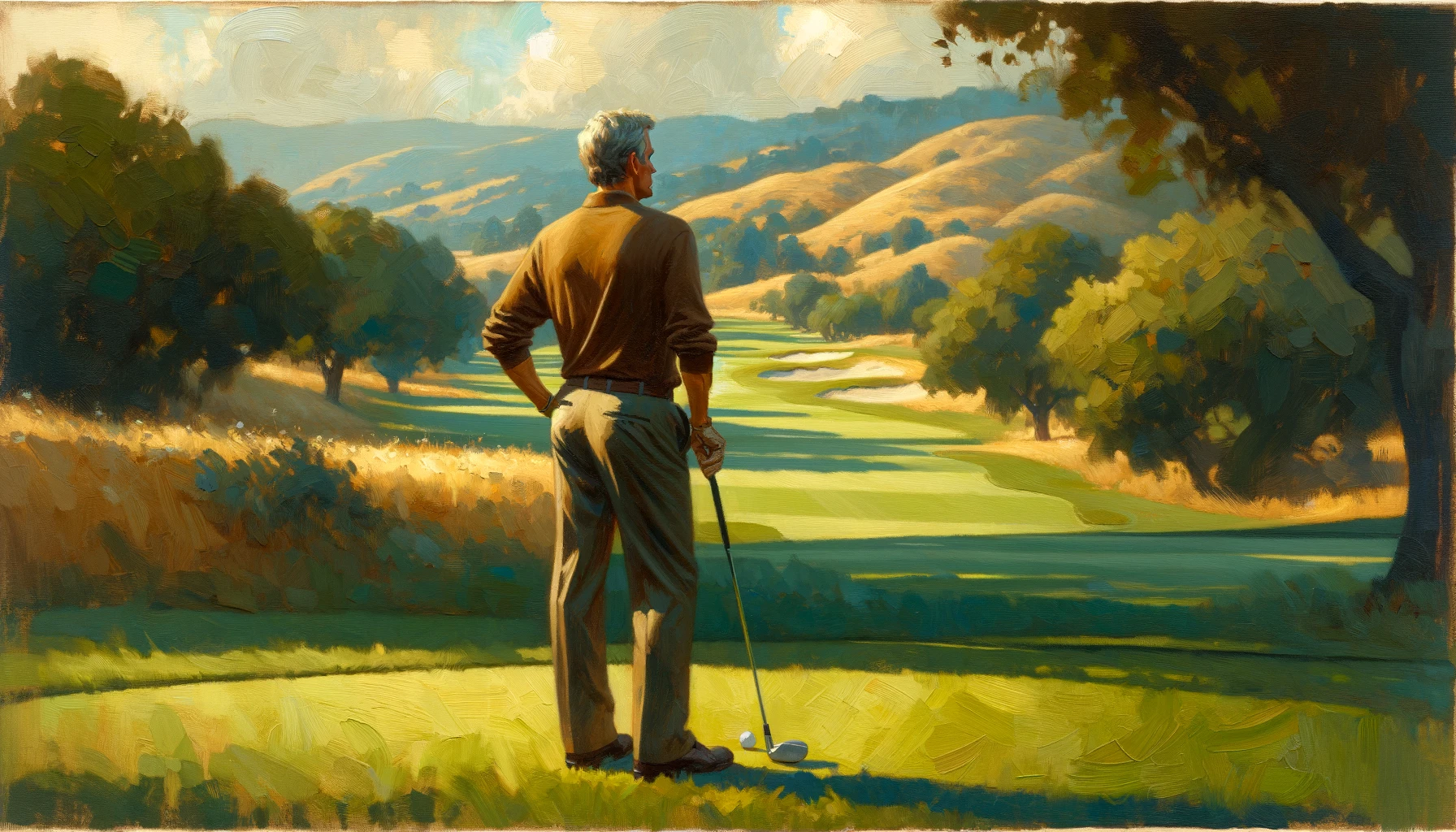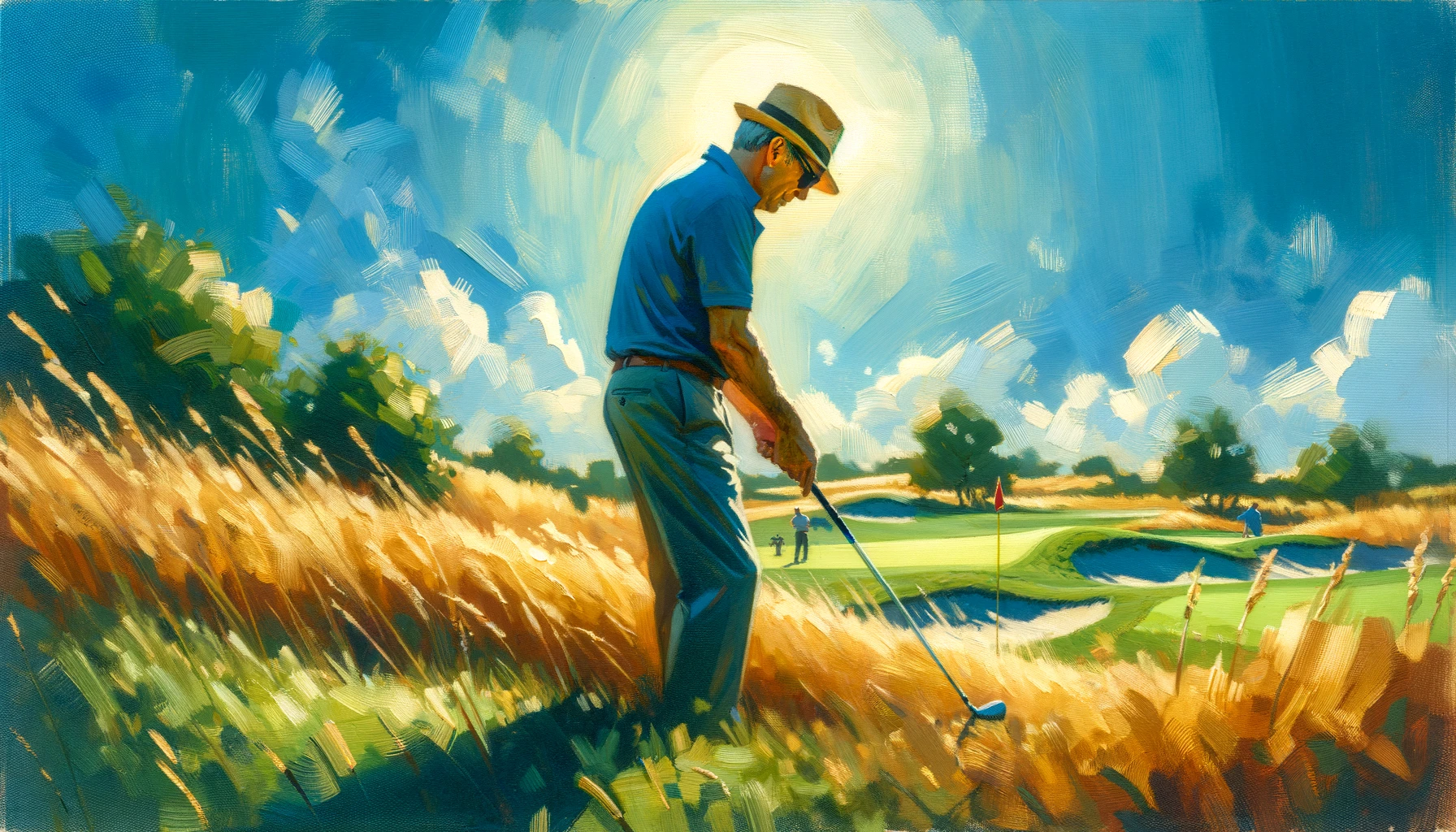Mastering the Art of Green Reading: Essential Tips for Golfers
Mastering how to read a golf green can drastically improve your golfing performance, helping you make more precise putts and ultimately lower your scores. From understanding the subtle slopes and contours that affect your ball's path to mastering the grain direction that influences the speed, this guide covers essential tips tailored to both novices and seasoned players. Dive into our key takeaways or jump straight to the FAQ for quick insights.
Have you ever felt the frustration of a perfectly struck putt veering off course, completely baffled by the green's subtle slopes? Like many weekend golfers, the challenge of reading greens can be a major roadblock to scoring well and enjoying your game.
It's not just about the undulations you can see; it's the hidden breaks and the deceiving grain direction that often go unnoticed. This can lead to unnecessary strokes and, let's face it, a simmering frustration that can spoil an otherwise fantastic round. Without a clear understanding of how to read a golf green, you're at a significant disadvantage, often left guessing rather than confidently executing your shots.
But imagine if you could crack the code of green reading, turning each putting opportunity into a showcase of your skill and precision. This article will guide you through the essential techniques of green reading, from understanding the basics of slope and grain effects to advanced strategies used by seasoned golfers. With these tips, you’ll not only boost your confidence on the greens, but you’ll also see a noticeable improvement in your scoring. Let’s dive into the secrets of mastering the art of green reading and transform your golf game.
 A seasoned golfer finds his focus amidst the serene greens.
A seasoned golfer finds his focus amidst the serene greens.Discovering the Green: My Journey in Golf
My golf journey began as a way to connect with friends and escape the daily grind. Initially, I struggled with inconsistency, often feeling frustrated by my inability to understand the complexities of the golf course, especially the greens.
Determined to improve, I spent countless hours on various courses, seeking advice from pros and experimenting with different techniques. Despite some improvements, I still felt something was missing that could truly elevate my game.
Everything changed when I discovered a new approach to reading greens through a seasoned golfer’s blog. This method, focusing on the intricacies of slope and grain, opened my eyes to a new way of seeing the course.
Adopting this new framework, I began systematically analyzing each green, taking into account factors like topography, grass type, and moisture. This structured approach transformed my putting game and overall strategy.
Since embracing this new method, I’ve not only improved my scores significantly but also found a deeper enjoyment in the game. Golf is no longer just a sport for me; it's a challenge that I continually master, round after round, enhancing both my skills and my appreciation for the sport.
"Success in golf depends less on strength of body than upon strength of mind and character." - Arnold Palmer
How Can You Accurately Read Golf Greens for Better Putting?
There’s nothing quite like the feeling of watching a well-planned putt roll smoothly into the hole. My journey to mastering green reading started on a sunny afternoon at the local course, where a friendly competition turned into a lesson in humility. I remember standing over a crucial putt, misreading the slope completely, and watching in dismay as the ball veered wildly off course. It was then I realized: understanding the green is a skill, and like any skill, it requires knowledge and practice.
The first step to accurate green reading is to understand that greens are not flat surfaces. They have contours and slopes, often subtle, that influence the direction and speed of the putt. Here’s how you can start mastering this essential golfing skill:
- Look for the overall slope: Begin by standing at the lowest point of the green and looking towards the hole. This will give you a general idea of the slope and the direction in which the green tilts.
- Examine from different angles: Walk around the putt and view it from multiple angles. Sometimes, what seems flat from one angle reveals a hidden slope from another.
- Check the grain direction: The direction in which the grass grows can affect the roll of the ball. Grass shining and reflecting sunlight indicates the grain is towards you, slowing the ball down; a dull appearance means the grain is with you, speeding the ball up.
Using these techniques has drastically improved my putting game. Just last weekend, I used my newfound skills to sink a birdie on a particularly tricky 12th hole, much to the amazement of my buddies. It was a moment of triumph, a testament to the power of understanding and adapting to the green.
Moreover, there are tools available that can help. Many modern golf apps offer green reading features based on topographic maps of courses. While these tools are helpful, they should complement rather than replace your sensory and visual assessments.
Finally, practice is key. The more you practice reading greens, the more intuitive it will become. Start by practicing on familiar greens to build your confidence, then challenge yourself on new courses. Each green has its own personality, and learning to read them effectively is an art form that can be the difference between a good round and a great one.
Remember, the secret to consistent putting lies not just in your stroke, but in how well you read the green. Master this, and you’ll find yourself making more putts and enjoying your game even more.
 Autumn colors enrich a golfer's quest for the perfect putt.
Autumn colors enrich a golfer's quest for the perfect putt.What Are the Key Techniques to Master Reading a Golf Green?
If you've ever wondered why some golfers seem to have a magical knack for sinking putts, the answer often lies in their ability to read the green effectively. I learned this the hard way during a memorable round where every putt seemed to miss by inches, despite my calculations. Frustrated and determined, I sought advice from an old golf pro at the club. What he taught me transformed my approach to putting forever.
Here are some key techniques that can help you master the art of reading a golf green:
- Start with a Broad Overview: Before you even reach the green, start observing it from a distance. Notice the overall terrain and any major features like hills or valleys that might affect the putt.
- Feel the Green with Your Feet: As you walk onto the green, pay attention to the feel under your feet. Changes in the firmness can give clues about the underlying soil and moisture, which can affect ball roll.
- Use the Low Side Approach: Approach the putt from the low side of the green, as it offers the best perspective of the slope. This is where gravity’s pull will be most noticeable, providing critical information about how the ball will break.
- Check the Color and Sheen: Look at the color and sheen of the grass. A shiny appearance often means you’re looking down grain, which will speed up the putt. A duller look indicates an up grain direction, which slows the ball down.
- Practice Reading from the Hole Backwards: Start at the hole and walk backwards along the line of your putt, observing the path from a reverse angle. This can provide a fresh perspective and reveal subtle breaks you might have missed.
These techniques have been game changers for me. I remember using them during a tough match where I managed to read a complex double-breaking putt perfectly. My opponent watched in awe as the ball took a serpentine path right into the hole. It wasn’t magic; it was a methodical approach to green reading.
Remember, mastering these techniques takes practice. Don't get discouraged by early attempts. Keep refining your skills, and soon, reading greens will become a powerful tool in your golfing arsenal, helping you to reduce your strokes and gain a competitive edge over your fellow golfers.
 Deep in thought, a golfer assesses the rolling greens ahead.
Deep in thought, a golfer assesses the rolling greens ahead.How Do Slope and Grain Affect Your Green Reading and Putting?
Understanding the impact of slope and grain on your putting is like unlocking a secret level in a video game—it transforms your gameplay. I still vividly remember a local tournament where my lack of knowledge about these elements cost me a crucial shot. It was on the 18th green, the pressure was on, and my putt was critical. I read the slope but completely ignored the grain, resulting in the ball veering off to the right just inches from the hole. That day, I learned that both slope and grain are pivotal in determining how a golf ball behaves on the green.
Here’s how you can understand and use slope and grain to your advantage:
- Reading the Slope: The slope of the green significantly affects the ball’s path. To read the slope effectively, always start by squatting behind your ball, looking towards the hole. Notice if the green tilts left, right, uphill, or downhill. This visual assessment helps predict the curve of your putt based on gravitational pull.
- Understanding Grain Direction: The direction in which the grass grows, or the 'grain,' can either speed up or slow down your putt. If the grass blades are leaning towards the hole, your putt might speed up. Conversely, if they’re leaning against your putt’s direction, they’ll slow it down. To determine the grain direction, look at the color and texture of the grass. Shiny and smooth indicates down-grain, which speeds up the putt; dull and rough suggests up-grain, slowing it down.
- Combining Slope and Grain: When reading a green, consider both factors. A downhill, down-grain putt will be much faster than an uphill, against-grain putt. Adjust your force and angle accordingly.
Incorporating these insights into your play can dramatically improve your performance. I recall adjusting my putts according to these factors during my next tournament, and the difference was night and day. My putts were more accurate, and my confidence soared.
Practicing these techniques consistently will help you become more attuned to the nuances of each green. Over time, you’ll find yourself making smarter choices, leading to fewer putts per round and better overall scores.
Remember, golf is not just about hitting the ball; it’s about smart strategies and precise adjustments. Mastering the art of reading slope and grain on greens is a crucial step towards becoming a top-notch golfer.
 Morning light casts soft shadows on a golfer planning his next move.
Morning light casts soft shadows on a golfer planning his next move.Key Takeaways: Master the Art of Reading Golf Greens
To transform your golfing experience and score better, here are the core actionable takeaways you can use immediately:
- Understand the Basics: It starts with recognizing that no green is flat. Learning to read the contours and slopes is fundamental.
- Feel the Green: Walk the green and feel its texture under your feet. This simple action helps you understand the underlying conditions affecting the ball’s roll.
- Check from Various Angles: Always look at your putt from multiple angles. A putt might look flat from one side but reveal a tricky slope from another.
- Master the Grain: Learn to read the grain direction as it greatly influences the speed and path of the putt. Shiny grass indicates a fast putt, while dull grass shows resistance.
- Combine Techniques: Use both slope and grain readings to adjust your putts accurately. This holistic approach will significantly improve your putting accuracy.
It streamlines your decision-making on the green so you can have a focused approach, which means less second-guessing and more confident shots.
Now, you stand at a crossroads. You can either continue with your usual approach and get the usual results, or you can implement these strategies and start seeing improvement in your game. The choice is yours. Will you step up your game with these insights, or will you keep battling the same challenges? The ball is in your court.
FAQ: Mastering the Art of Reading Golf Greens
What are the most crucial aspects of reading a golf green?
What are the most crucial aspects of reading a golf green?
Understanding slope, grain direction, and environmental factors like wind and moisture are vital to effectively reading a golf green. These elements affect the roll and speed of the ball significantly.
You're probably thinking that mastering green reading takes years, right?
You're probably thinking that mastering green reading takes years, right?
Well, actually, while becoming proficient can take time, basic improvements can be seen relatively quickly through consistent practice and focused learning.
Why does my ball sometimes take an unexpected path even after reading the green?
Why does my ball sometimes take an unexpected path even after reading the green?
Subtle slopes and hidden dips can alter a ball’s path unexpectedly. Regular practice and attention to slight environmental changes can help mitigate these surprises.
How do slope and grain direction impact a putt?
How do slope and grain direction impact a putt?
Slope determines the ball's trajectory, while grain direction affects its speed. A putt on a downhill slope with the grain can run much faster than one going uphill against the grain.
What tools can help me read a green more effectively?
What tools can help me read a green more effectively?
Golf apps and laser rangefinders equipped with slope features can provide valuable insights. However, they should complement, not replace, your natural intuition and practice on the green.
You're probably thinking that you can't improve without expensive equipment, right?
You're probably thinking that you can't improve without expensive equipment, right?
Well, actually, many professional golfers stress the importance of skill and practice over high-end equipment. Effective green reading can be significantly enhanced by focusing on technique and frequent practice.
How can I practice reading greens better?
How can I practice reading greens better?
Regular practice on different courses will enhance your ability to read greens. Focus on experiencing various slopes and grains under varying conditions to develop a robust skill set.
You're probably thinking it's all about natural talent, right?
You're probably thinking it's all about natural talent, right?
Well, actually, while innate skill plays a role, effective green reading is more about learned techniques and experience. Anyone can improve their skills with the right approach.



















